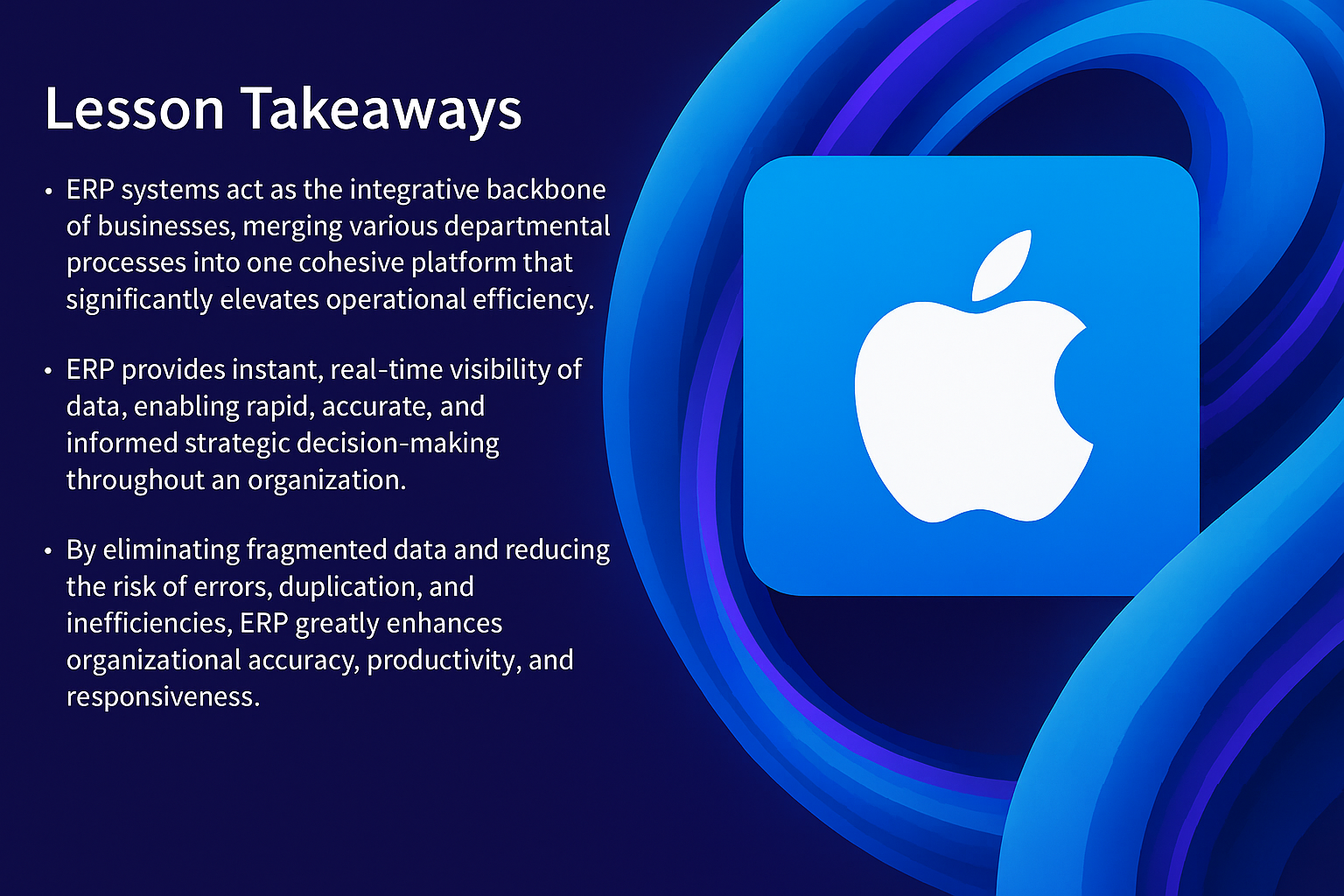Lesson Title: What is ERP?
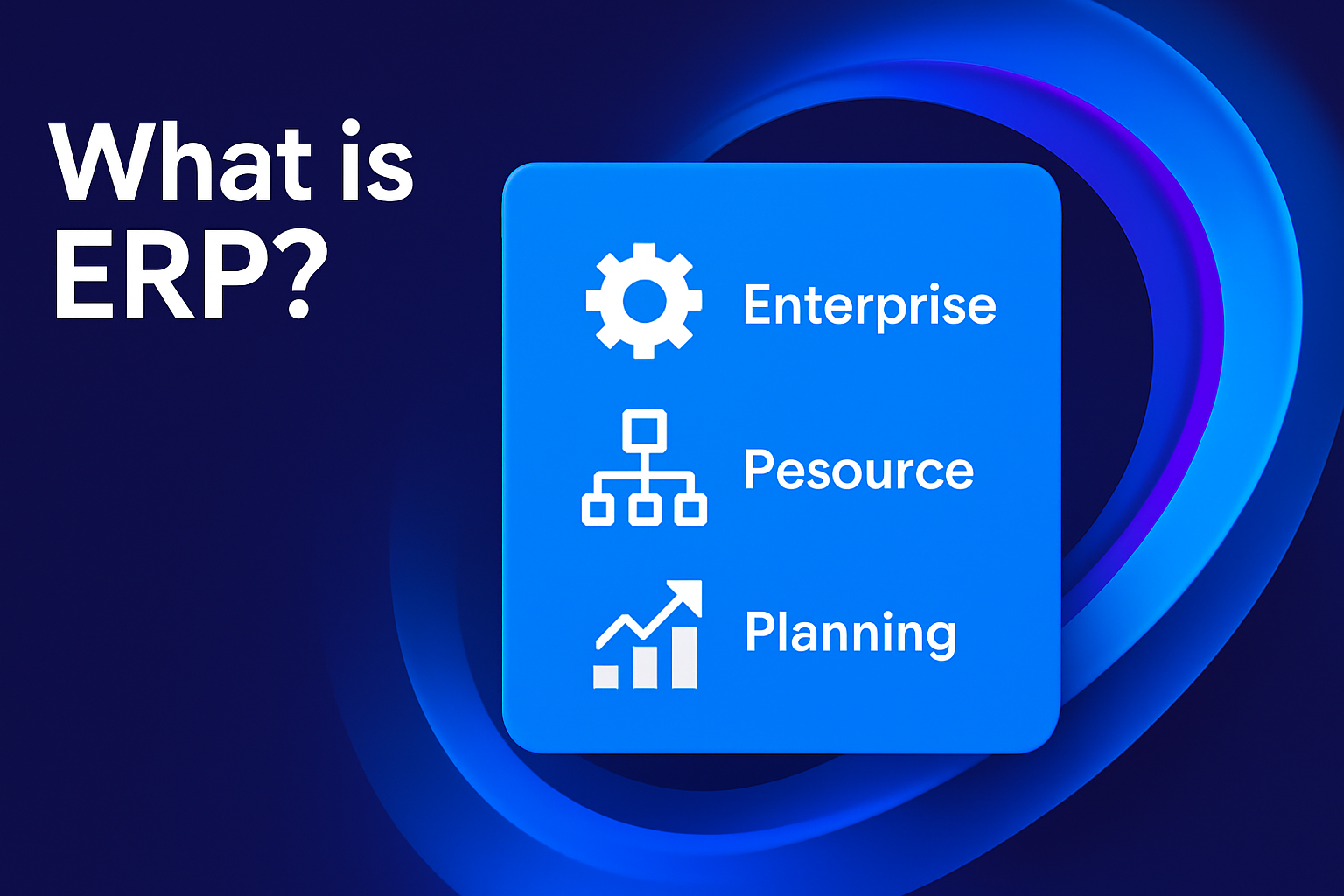
Lesson Description:
In this foundational lesson, you’ll dive deeply into the concept of Enterprise Resource Planning (ERP) systems. Utilizing Apple Inc. as a practical and relatable example, you will explore in detail how global businesses employ ERP software to integrate, manage, streamline, and optimize complex operations across various departments, enabling seamless collaboration and efficient decision-making processes.
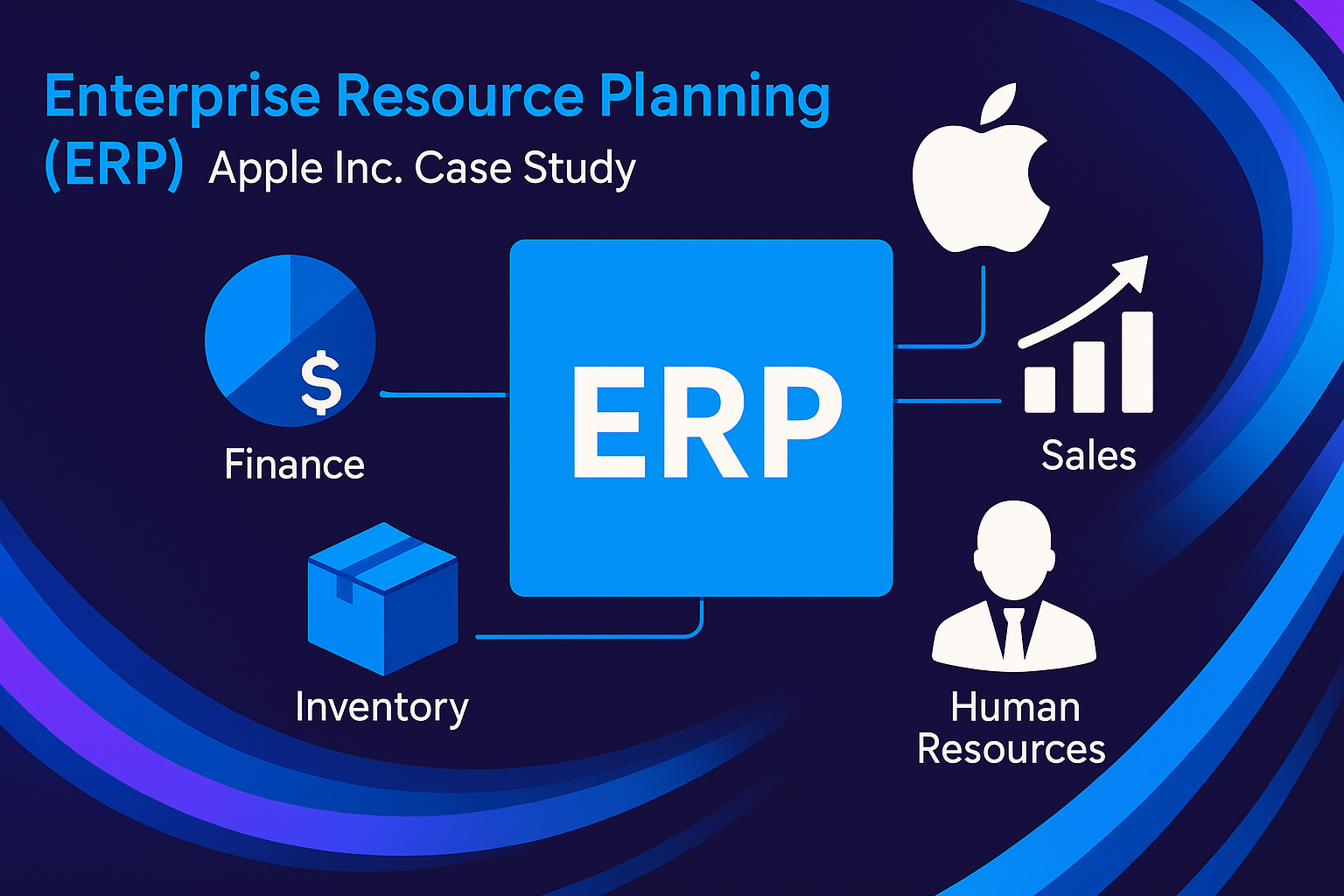
Lesson Learning Objectives:
-
Clearly define and elaborate on Enterprise Resource Planning (ERP).
-
Deeply understand the critical role ERP plays in modern, efficient business operations.
-
Identify and thoroughly examine key functions, advantages, and real-world impacts of ERP systems, particularly through detailed examples from Apple Inc.
Lesson Key Points:
✅ Definition of ERP:
-
ERP is a sophisticated, integrated software solution designed to unify and harmonize all essential business processes and data.
-
Functions as the central nervous system for businesses, creating seamless connections between diverse departments including finance, sales, inventory management, human resources, procurement, and production.
-
Provides a single, centralized repository for data, ensuring consistency and accuracy across all areas of an organization.
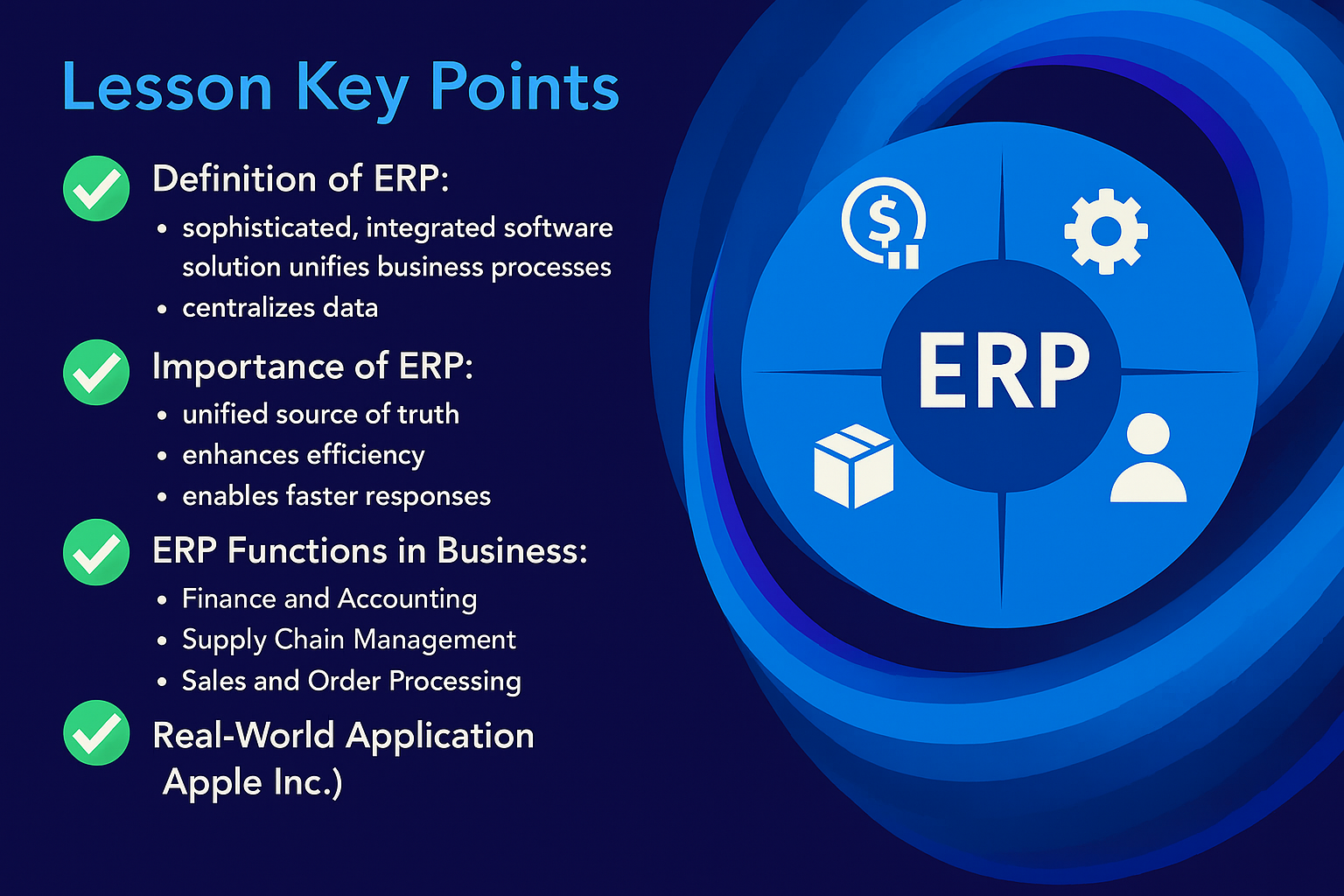
✅ Importance of ERP:
-
ERP addresses critical business challenges by eliminating fragmented or siloed data sources, thus establishing a unified, accurate, and reliable source of truth.
-
Significantly enhances operational efficiency by automating and streamlining processes, reducing human errors, duplication of efforts, and operational redundancies.
-
Enables organizations to quickly respond to market changes, customer demands, and internal needs with agility and accuracy.
✅ ERP Functions in Business:
-
Finance and Accounting: Comprehensive automation of financial tracking, budget management, forecasting, and reporting, ensuring real-time financial visibility and accurate financial insights.
-
Supply Chain Management: Detailed monitoring and management of inventory, automated reordering processes, and optimization to prevent stockouts and overstocking.
-
Sales and Order Processing: Efficient and accurate management of the complete lifecycle of customer orders—from initial inquiry to delivery, enhancing customer satisfaction.
-
Production Planning: Accurate scheduling and forecasting for production activities, aligning operations with market demand to ensure timely production and resource optimization.
-
Human Resources: Streamlined management of employee lifecycle activities including onboarding, payroll, recruitment, and performance management, enhancing HR efficiency and employee experience.
✅ Real-World Application (Apple Inc.):
-
Demonstrated how ERP effectively manages Apple’s global operations—from procurement and inventory management to sales tracking and real-time financial updates.
-
Explored ERP’s crucial role during Apple’s complex and large-scale product launches, managing extensive global supply chains, handling millions of customer transactions, and ensuring strict regulatory compliance.
Lesson Summary:
In this detailed lesson, you explored the concept of Enterprise Resource Planning (ERP), emphasizing its critical role as an integrated system harmonizing diverse business operations. Through the practical example of Apple Inc., you examined ERP’s capability to maintain real-time data accuracy across multiple functions—finance, sales, inventory, and human resources. ERP streamlines operations, supports informed strategic decisions, centralizes data, and automates critical processes, significantly reducing errors and inefficiencies. Companies like Apple vividly illustrate how ERP empowers businesses to rapidly adapt, maintain transparency, and achieve competitive advantages.
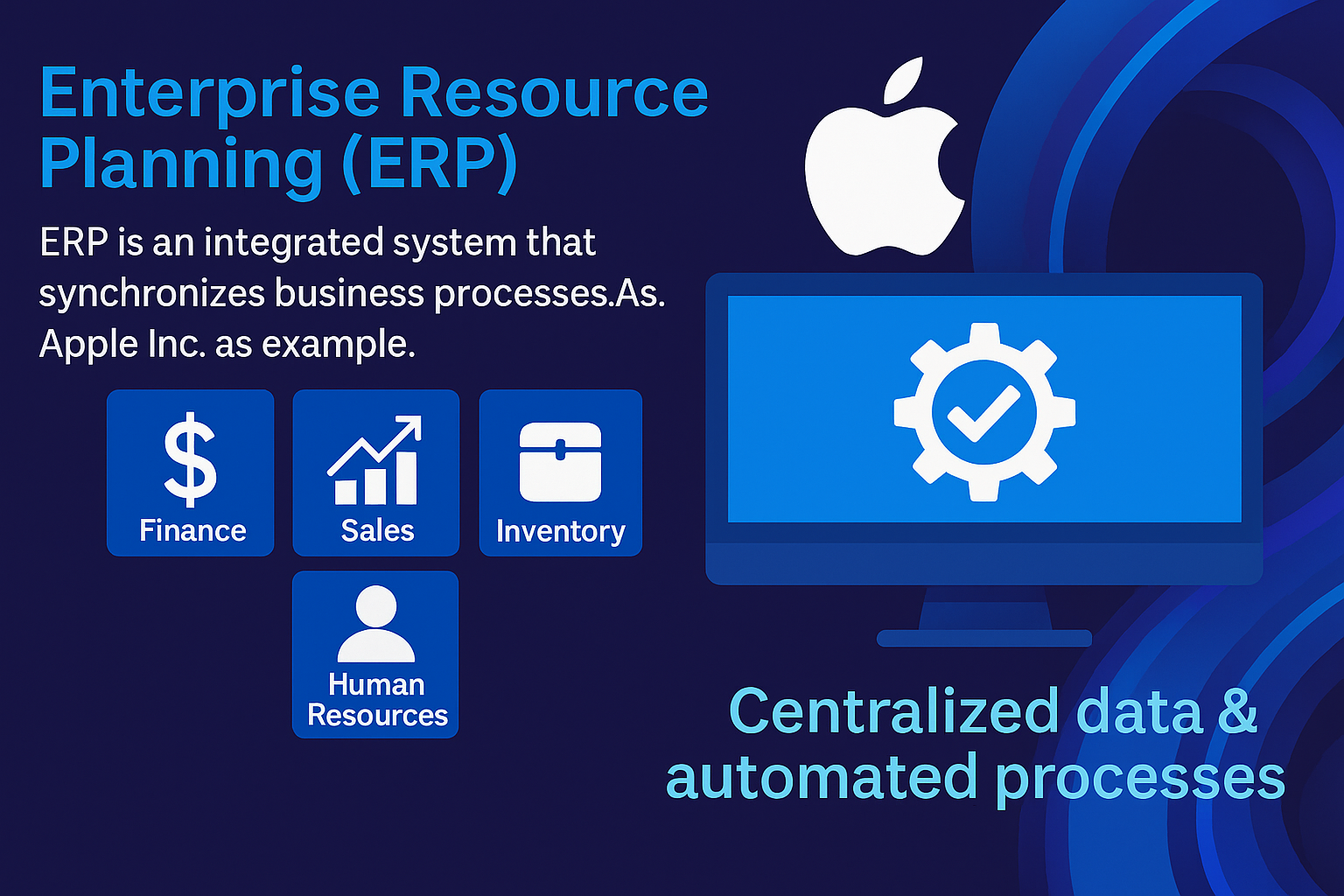
Lesson Takeaways:
-
ERP systems act as the integrative backbone of businesses, merging various departmental processes into one cohesive platform that significantly elevates operational efficiency.
-
ERP provides instant, real-time visibility of data, enabling rapid, accurate, and informed strategic decision-making throughout an organization.
-
By eliminating fragmented data and reducing the risk of errors, duplication, and inefficiencies, ERP greatly enhances organizational accuracy, productivity, and responsiveness.
-
ERP implementation effectively prepares businesses for growth, scalability, complexity management, compliance with regulatory requirements, and encourages continuous innovation.
-
Through Apple’s extensive use of ERP, learners clearly visualize the substantial real-world benefits and transformative potential ERP systems provide, enabling businesses to achieve higher operational performance, customer satisfaction, and competitive strength.
